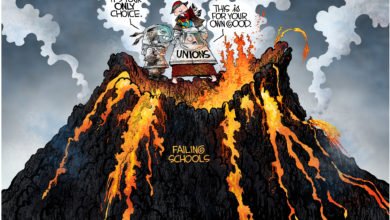QE3: Seriously?
Quantitative Easing is simply the introduction of money into the economy by a central bank. It has been done twice during the current recession with no positive effects and Ben Bernanke’s Federal Reserve seems ready to launch version three – often referred to as QE3.
QE1
QE1 launched on November 25th, 2008 with a Federal Reserve initiated purchase of $500 Billion in mortgage-backed securities with the hope of lowering borrowing costs in order to stimulate the drowning housing market. The fed later bought several hundred billion dollars of securities from troubled entities such as Fannie Mae, Freddie Mac and Federal Home Loan banks.
By buying up assets from private institutions, it lowered the risk those institutions possessed and would theoretically lower the cost of borrowing money.
Finding asset purchases to not be doing enough, the Federal Reserve lowered the key interest rate to .25%.
More troubled-asset buyouts occurred through 2009 and the Fed started to aggressively buy Treasury notes.
QE1 lasted until the end of March 2010 and resulted in 30-year mortgage rates dropping from 6.33% in late 2008 to 5.23% at the end of Q1 2010. $1.25 trillion was invested in asset purchases by the Federal Reserve during QE1.
QE2
QE2 went from November 3rd 2010 to June 30th of 2011.
Bought $600 billion of longer term treasuries by selling off short-term agency assets.
Although some economists had expected the move to keep interest rates low, 30-year fixed mortgage rates actually climbed .5%.
The Maturity Extension Program (aka “Operation Twist”)
By the end of 2012, the Federal Reserve hopes to put downward pressure on long term interest rates by selling a portion of its sizable inventory of long term Treasury bonds in trade for shorter term notes. By selling the longer term notes, it is expected that prices for those bonds will increase, thereby decreasing the yield or interest on them. Operation twist is not quantitative easing as it adds no net money supply due to the trading of one security for another.
Operation Twist started in the fall of 2011 and offers both good and bad news. The bad news is that it doesn’t seem to be doing very much to help the economy. Long term interest rates are at historic lows and the economy is not accelerating. This again points to the fact that borrowing costs are not the major issue holding the economy back.
One thing of note is that the sell-off of long-term Treasuries is exactly opposite of the Fed move in QE2. QE2 was about economic stimulus by lowering risk. Twist is focused on affecting interest rates in order to encourage borrowing. Neither addresses the fundamental issues of over-regulation, over-taxation and a White House opposed to free markets.
QE1 / QE2 Results
The effect on the economy from QE1 and QE2 are heavily-debated. Many experts discuss the inflationary effect that pumping so much money into the economy has while others state that banks actually never turned around and lent the money – it was used to shore up their own reserves so that the financial system did not fundamentally collapse.
While interest rates are at their lowest in recorded history, the housing and commercial real estate markets have yet to see a bounce to the upside. The real estate bubble was caused by banks being forced to loan to those that could not afford it – not by high interest rates. Lowering interest rates didn’t make those folks any more able to take on a mortgage than they were 5 years ago.
Lowering interest rates should also help corporations get funding – if only they wanted it. Large companies are sitting on their money out of distrust of the current administration and oppressive regulation. Making it a tiny bit less expensive to borrow doesn’t allay those concerns. In a recent World Economic Forum report, exactly those concerns were listed as a major reason for downgrading the U.S. economy’s competitive ranking to #7 (from #1 in 2008).
 For the experts that claim that the money supply didn’t grow to higher levels during QE1 and QE2.. here’s some real chart data for you. According to the experts at Shadowstats.com (chart right) the supply of currency and coin grew substantially during the months that quantitative easing was occurring. M1 is the measure of money in circulation and the chart says it all.
For the experts that claim that the money supply didn’t grow to higher levels during QE1 and QE2.. here’s some real chart data for you. According to the experts at Shadowstats.com (chart right) the supply of currency and coin grew substantially during the months that quantitative easing was occurring. M1 is the measure of money in circulation and the chart says it all.
The effect of a constantly increasing money supply is inevitably inflation. Defined as “a greater number of dollars searching for a diminished number of goods” inflation occurs due to the declining buying power each dollar represents. Our dollar has its value pinned to our Gross Domestic Product which has been growing at a much slower rate than M1. Price inflation is the only possible outcome.
QE3
Ben Bernanke and his cohorts at the Federal Reserve began meeting again today. The markets are anticipating another round of Treasury buys, asset buyouts and short to long term asset roll-overs to come out of the meeting. All of which is intended to bring long term interest rates down.
Should another round of quantitative easing (QE3) occur, it will certainly continue to inflate the price of non-bond assets and long-term bonds as more investors will walk away from the anemic yields on long term notes. Stocks will continue to see price increases despite a flagging economy which may slow private investment in the economy.
The money pumped into the economy will further increase M1 and decrease buying power for the average consumer. The inflation that all grocery shoppers, electricity users and gasoline buyers have been seeing will continue – even though the government’s measure (which leaves out food and fuel) will continue to show the success of QE with no ill effects.
The real question is why it’s being done? So far, QE has neither bouyed the economy nor re-invigorated it. The housing market is still in shambles and employment is unimproved. With only two months until the election and his chairmanship on the line if President Obama loses, Bernanke may be playing politics with the American economy.
Inflation expectations are for as much as a 5% peak consumer prices in the very near future As Tyler Durden of Zerohedge.com wrote:
CPI remains below 2% but there is a clear lag between the rise in market-implied inflation and it showing up in the unicorn-laden CPI prints – what this means is that given the hubris of the Fed yesterday,market expectations of inflation are inferring CPI could rise to over 5% within the next 3 to 6 months.





